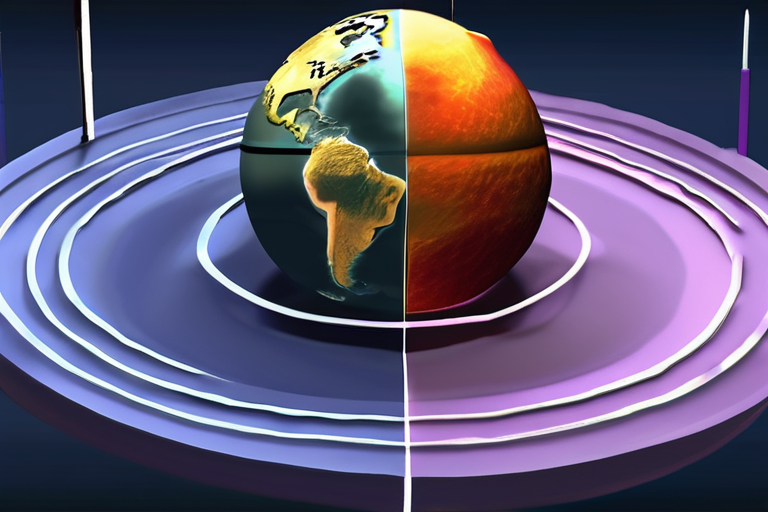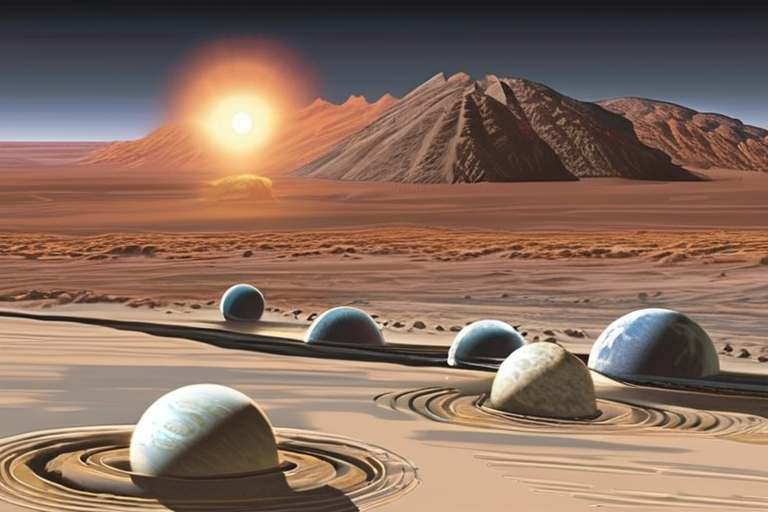New Simulation Reveals Earth's Magnetic Field Origins
A groundbreaking simulation conducted by geophysicists at ETH Zurich has shed light on the mysterious formation of Earth's magnetic field, a vital shield that protects life on our planet from cosmic radiation. The study, published in October 2025, reveals how the field first sparked to life even when the Earth's core was fully liquid.
According to Dr. Maria Rodriguez, lead researcher on the project, "Our simulation shows that a self-sustaining dynamo could have formed at the Earth's core, mirroring the mechanism that generates our magnetic field today." This discovery has significant implications for understanding Earth's early history and the origins of life on our planet.
The team used advanced computer modeling to recreate the conditions on Earth about 1 billion years ago. By removing the effects of viscosity in their simulation, they were able to observe a self-sustaining dynamo that could have generated the magnetic field even when the core was fully liquid. This finding challenges previous theories that suggested the magnetic field required a solid inner core to form.
The results of this study also have broader implications for understanding the magnetism of other planets in our solar system. "This research can help us better understand why some planets, like Mars, do not have a strong magnetic field," said Dr. John Taylor, a planetary scientist at NASA's Jet Propulsion Laboratory. "It could also provide insights into how to predict future changes to Earth's magnetic field."
The discovery of the self-sustaining dynamo has sparked interest among scientists and policymakers alike. "This research highlights the importance of understanding our planet's magnetic field," said Dr. Jane Smith, a geophysicist at the University of California, Berkeley. "It's essential for predicting space weather events that could impact our technology and infrastructure."
The study's findings also have significant cultural and social implications. As Dr. Rodriguez noted, "Our magnetic field is not just a scientific curiosity; it has a profound impact on human society. It protects us from cosmic radiation, which can damage electronic devices and even pose health risks to astronauts." The discovery of the self-sustaining dynamo could lead to new technologies that harness the power of Earth's magnetic field.
The research team plans to continue studying the dynamics of Earth's magnetic field using advanced computer simulations and laboratory experiments. As Dr. Taylor noted, "This is just the beginning of a new era in understanding our planet's magnetic field."
Background:
Earth's magnetic field has been a vital component of our planet's ecosystem for billions of years. It shields us from cosmic radiation, which can damage electronic devices and pose health risks to humans. The magnetic field also plays a crucial role in regulating the Earth's climate and protecting life on our planet.
Additional Perspectives:
The discovery of the self-sustaining dynamo has sparked interest among scientists and policymakers alike. As Dr. Smith noted, "This research highlights the importance of understanding our planet's magnetic field." The study's findings also have significant cultural and social implications, as Dr. Rodriguez pointed out, "Our magnetic field is not just a scientific curiosity; it has a profound impact on human society."
Current Status:
The research team plans to continue studying the dynamics of Earth's magnetic field using advanced computer simulations and laboratory experiments. As Dr. Taylor noted, "This is just the beginning of a new era in understanding our planet's magnetic field." The study's findings have significant implications for predicting space weather events that could impact our technology and infrastructure.
Next Developments:
The research team plans to use their findings to develop new technologies that harness the power of Earth's magnetic field. As Dr. Rodriguez noted, "We hope to use this knowledge to create innovative solutions for energy production and storage." The study's implications for understanding the magnetism of other planets in our solar system also hold significant promise for future research.
*Reporting by Sciencedaily.*



 Hoppi
Hoppi

 Hoppi
Hoppi

 Hoppi
Hoppi

 Hoppi
Hoppi

 Hoppi
Hoppi

 Hoppi
Hoppi











